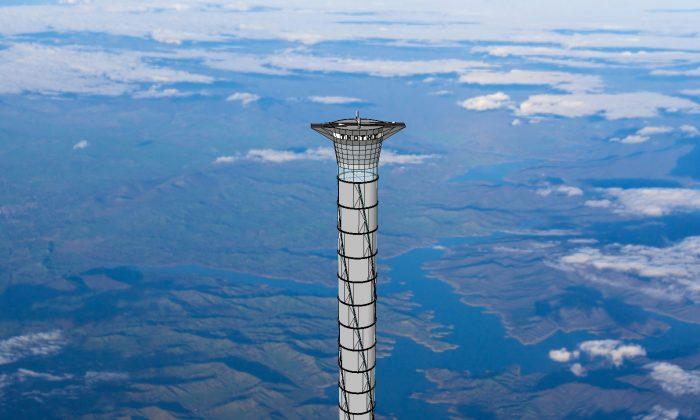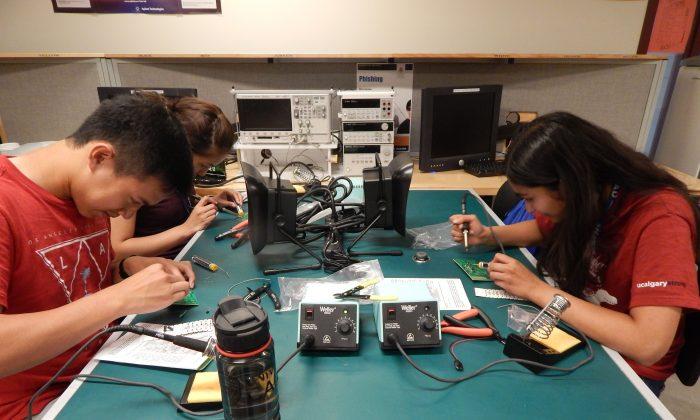A famous science fiction concept of a space elevator popularized by author Arthur C. Clarke may actually be possible thanks to a Canadian company’s technology that promises “a new way to access space.”
Thoth Technology of Pembroke, Ont., has been granted both U.S. and U.K. patents for the freestanding space tower, which would soar 20 kilometres into the sky and allow astronauts to launch into space from a platform on top.
“Astronauts would ascend to 20 km by electrical elevator. From the top of the tower, space planes will launch in a single stage to orbit, returning to the top of the tower for refueling and reflight,” said Dr. Brendan Quine, the inventor of the concept, in a press release.
The technology is estimated to save more than 30 percent in fuel costs—a prohibitive cost to space missions presently.
Using a system based on an inflatable tower concept, the ThothX Tower could also be used for wind-energy generation, communications, and tourism.
According to the patent application, technological obstacles that need to be overcome include the construction of a cable with suitable strength characteristics to support itself at such a height.
Thoth’s design gets around this problem by keeping the elevator within the stratosphere rather than extending it into the geostationary orbit.
The idea of a space elevator has received continued attention since the initial concept was first proposed, not by Arthur C. Clarke in “Fountain of Paradise” but by Russian scientist Konstantin Tsiolkovsky in the late 19th century. The concept was originally dismissed even by Tsiolkovsky, but with technical advancements has gained increased attention in recent years, with mentions at TED talks and in popular science publications and programs.
The Thoth concept is slightly different from past designs, with the tower proposed to incorporate a flexible sheet metal with gas compressor machinery providing a stabilizing component to the design.
“Landing on a barge at sea level is a great demonstration, but landing at 12 miles [20 km] above sea level will make space flight more like taking a passenger jet,” said Thoth president and CEO Caroline Roberts.
During an open question-and-answer session on PBS program Nova in 2007, physicist Bradley Edwards, who has authored two books on the elevator concept, estimated one of his elevator designs could potentially carry 13 tons every three days into space. That elevator design would cost $10 billion to start and would take roughly 10 years to construct.
Asked about political challenges to be addressed, Edwards said, “There will be countries upset with others for constructing it, there will be legal issues concerning right of way for spacecraft in orbit, and then there will be those nations, organizations, or individuals who just want to take a piece.”
Kaven Baker-Voakes is a freelance reporter based in Ottawa.





Friends Read Free